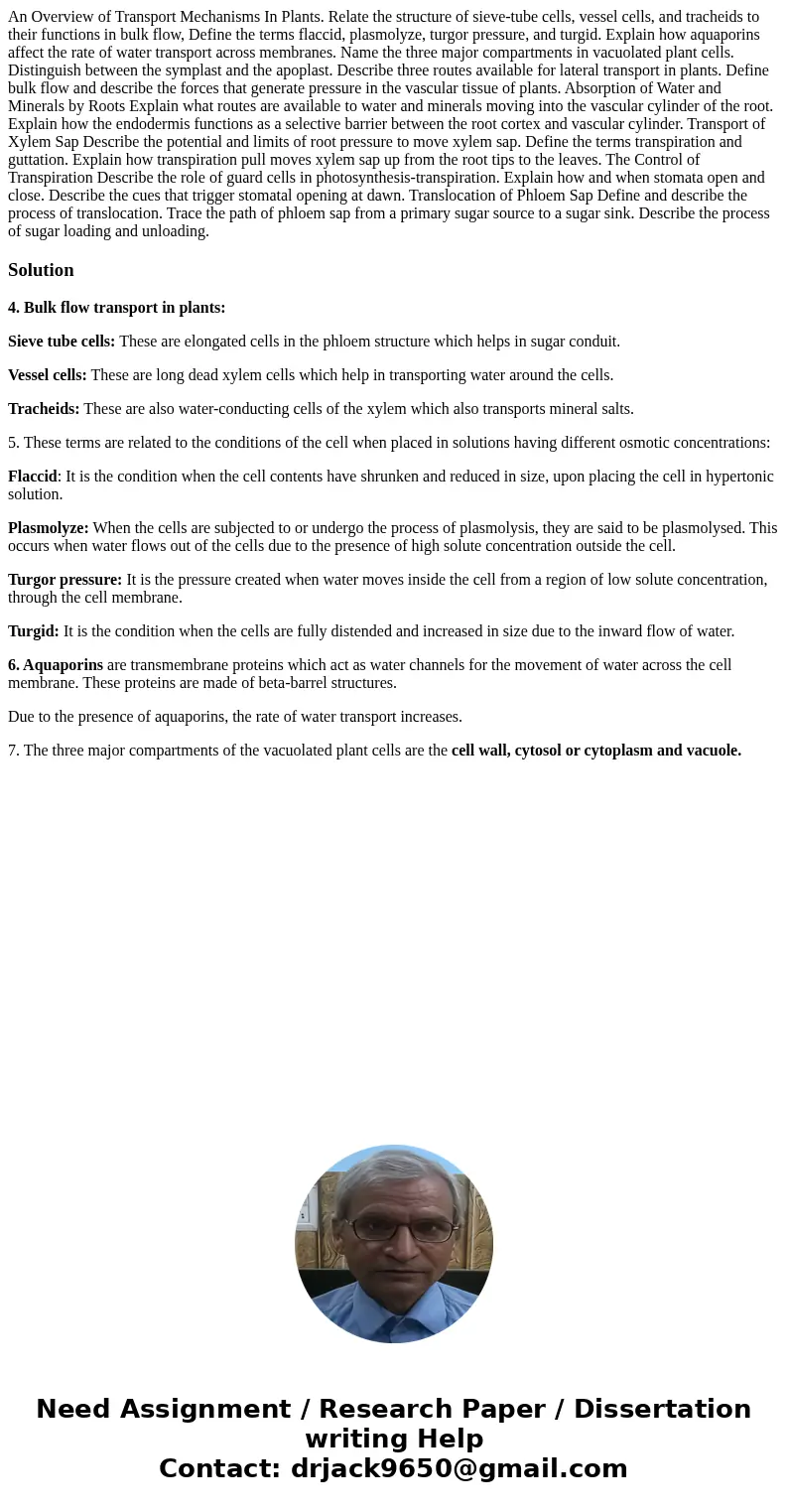An Overview of Transport Mechanisms In Plants Relate the str
Solution
4. Bulk flow transport in plants:
Sieve tube cells: These are elongated cells in the phloem structure which helps in sugar conduit.
Vessel cells: These are long dead xylem cells which help in transporting water around the cells.
Tracheids: These are also water-conducting cells of the xylem which also transports mineral salts.
5. These terms are related to the conditions of the cell when placed in solutions having different osmotic concentrations:
Flaccid: It is the condition when the cell contents have shrunken and reduced in size, upon placing the cell in hypertonic solution.
Plasmolyze: When the cells are subjected to or undergo the process of plasmolysis, they are said to be plasmolysed. This occurs when water flows out of the cells due to the presence of high solute concentration outside the cell.
Turgor pressure: It is the pressure created when water moves inside the cell from a region of low solute concentration, through the cell membrane.
Turgid: It is the condition when the cells are fully distended and increased in size due to the inward flow of water.
6. Aquaporins are transmembrane proteins which act as water channels for the movement of water across the cell membrane. These proteins are made of beta-barrel structures.
Due to the presence of aquaporins, the rate of water transport increases.
7. The three major compartments of the vacuolated plant cells are the cell wall, cytosol or cytoplasm and vacuole.

 Homework Sourse
Homework Sourse